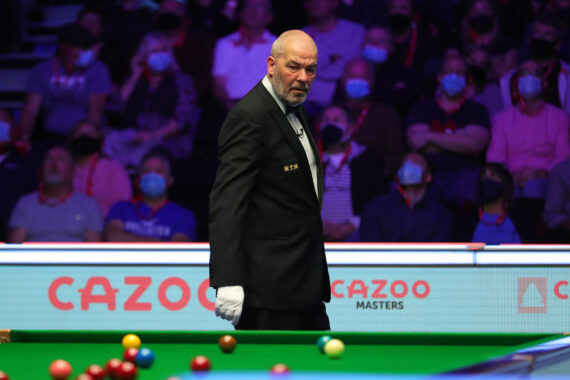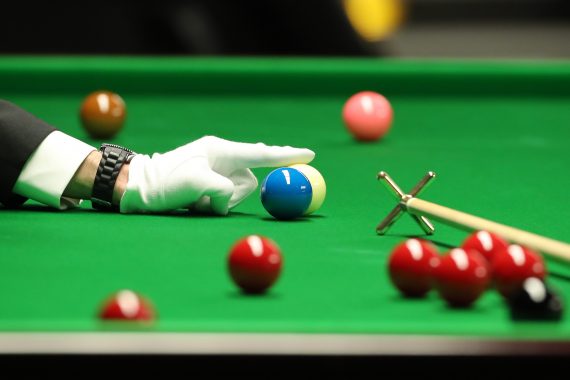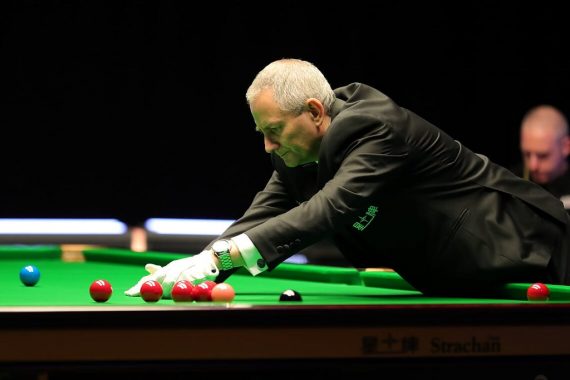Ask the Ref – Jan Verhaas
In the second edition of our new ‘Ask the Ref’ series, Dutchman Jan Verhaas takes the hot seat to answer your questions on the rules of the game and more.
An official who needs little introduction, having officiated 17 ‘triple crown’ finals, including five World Championship finals at the Crucible Theatre and a record-equalling eight Masters finals.
In December 2016, the 50-year-old was appointed as a director of the WPBSA, succeeding legendary referee Alan Chamberlain in the role.
“I am extremely excited to be joining the WPBSA and would like to thank the members for the support that I have received already,” said Verhaas.
“Snooker has been my life since I first began refereeing over 25 years ago, but I am as enthusiastic as ever about the sport and have all of the energy in the world to get on with the tasks ahead of me in this new position.
“In particular it is an honour for me to succeed Alan Chamberlain, who played a key role in the sport for so many years and was an inspiration to me and so many others when I joined the game. He leaves a big pair of shoes to fill, but I look forward to the challenge.”
Ask Jan
The first question for Jan in this edition of ‘Ask the Ref’ came from John who asked why a miss is not called when snookers are required.
data-conversation=”none” data-lang=”en”>
@WorldSnooker1 @WPBSAofficial what’s the reason for the “no miss rule when you need snookers
— John (@seventeenofive) February 4, 2017
Jan answers:
The FOUL AND A MISS rule is all about the intention of a player to hit the ball on to the best of his ability,” said Verhaas. “In the ‘snookers required’ stage of a frame, as a referee, you have got to ask yourself ‘why would the player who is behind not try to hit the ball on and go behind in the scores even more?’ Or ‘why would the player who is not in front not try to hit the ball on and give his opponent the chance to maybe win the frame again?’
 There really is no answer to either of those questions, so it is widely understood that in the snookers required stage, either player will always do their best to hit the ball on.
There really is no answer to either of those questions, so it is widely understood that in the snookers required stage, either player will always do their best to hit the ball on.
However, the rule does cater for the situation if a player players without any intention [to hit the ball on?] whatsoever. In that case the referee can call FOUL AND A MISS regardless of the difference in scores.
Question 2
@WPBSAofficial @snookerorg @WorldSnooker1 If a ball stops in the jaws of a pocket but drops after the opponent has played, what happens?
— Andy Brook (@andybrook1) January 25, 2017
Jan answers:
There are a few options here. First of all, because it didn’t balance momentarily on the edge and then fell in, it doesn’t count. Momentarily means that there is no time limit on it but when the referee considers that the stroke is finished then it won’t count as being in the pocket. Clearly, after the opponent has played his shot, this is now the case.
Now we have to determine when the ball falls in the pocket. If that is between strokes being played then it will just be replaced on the edge of the pocket. If it is during a stroke in progress then we should determine if it would have been hit by any ball during that stroke.
If not during a stroke in progress, it will be replaced on the edge and any points scored shall count. If it would have been hit however, and no Foul has been made, then all balls will be replaced and the same stroke played again, or a different stroke may be played by the same striker.
If a Foul was made, the striker incurs the penalty, all balls will be replaced and the next player has the usual options after a Foul.
Question 3
@WPBSAofficial @WorldSnooker1 what would happen if a player was to put their cue through the cloth of the table during a frame? #AskTheRef
— Abigail Waugh (@abbyrfc97) January 25, 2017
Jan answers:
Luckily this doesn’t happen too often! but I can remember one instance with Peter Edbon at the Crucible Theatre one year. The cloth was ripped but it was decided with the Tournament Director, the table fitters and both players that they would carry on and finish the session. The table fitters then re-cover the table.
Because it takes the fitters about an hour to completely re-cover the table, they will decide whether they can fix it temporary so that play can continue. If they decide that the damage is too severe then the frame will pause, a still picture of the position of the balls will be taken, the table will be re-covered, balls will be set up as to where they were previous and the frame will commence.
Question 4
@WPBSAofficial @janverhaas @WorldSnooker1 If a players tip comes off on the shot and lands on another ball, is it a foul stroke? #asktheref
— Steve Bradley (@SteveJBradley) January 23, 2017
Jan answers:
It sure is! the tip is part of the striker’s cue and therefore it counts towards Fouls.
Question 5
@WPBSAofficial @janverhaas @WorldSnooker1 27 left on table, 27 behind. Can a Miss be called?
— Rich Streety Street (@RichStreet1) January 23, 2017
Jan answers:
As I described above at question 1, the FOUL AND A MISS Rule says that in normal circumstances a MISS will not be called (Section3, Rule14(a)(ii)).
 However, the the last few words in that paragraph (…and the referee is satisfied that the MISS was not intentional…) give the referee the freedom to call the MISS if he thinks that the striker has made no effort whatsoever to try and hit the ball-on.
However, the the last few words in that paragraph (…and the referee is satisfied that the MISS was not intentional…) give the referee the freedom to call the MISS if he thinks that the striker has made no effort whatsoever to try and hit the ball-on.
Question 6
@WPBSAofficial @ProSnookerBlog On a break, snookered on a colour – miss and miss called. Try again and fluke it -break continues? #asktheref
— Dominic O’Shea (@osheasport) January 23, 2017
Jan answers:
The break made previously by potting the Red will not continue, but a new break will start by potting the colour. This will be the only time that a break can start by potting a colour when Reds are still at the table (without a Free Ball of course!).
So, it is not possible to make a 147 maximum with a Foul in the process.
Do you have any questions for one of our leading referees? Get in touch via social media or via our contact form #AskTheRef




